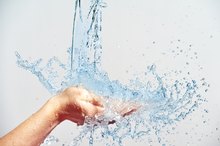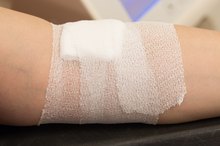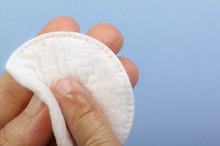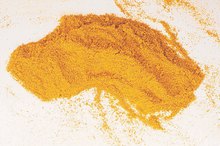How to Treat Airbag Burns
Airbags can cause thermal burns, chemical burns, and friction burns. There are different treatments for each type of burn, so it is important to know which kind of burn you suffered from a deployed airbag.
Chemical Burn Treatment
Begin basic first aid. Remove any contaminated clothing and wash the injured area to remove the chemical substance.
How to Treat a Burn Bubble
Learn More
Use lots of water, washing for at least 20 minutes. If the chemical burn has affected your eye(s), the best way to get your eyes flushed is to get into the shower.
Brush away any solid material around the burn area. Be careful to not get the solid material on unburned skin, in the event that this material caused the burn in the first place.
Home Remedies for Minor Chemical Burns
Learn More
Get medical treatment if the burn looks bad, or if you are uncertain of cleaning and caring for the burn itself. Medical treatment for severe burns might include IV fluids to normalize blood pressure and heart rate or IVs for medications needed to treat pain or protect against infection. Treatment also includes flushing the area with water and applying an antidote to counteract the chemical (if appropriate). Follow up treatment includes cleaning and bandaging of the wound with medicated creams.
- Remove any contaminated clothing and wash the injured area to remove the chemical substance.
- Get medical treatment if the burn looks bad, or if you are uncertain of cleaning and caring for the burn itself.
Thermal Burns Treatment
Stop the burning process. Thermal burns can be caused by airbags (the heating of the chemical reaction). If possible get the airbag away from the person, if the person cannot get out of the car.
Cool the burn with water. Do not use ice. If possible, have cool water within 30 seconds, as this may limit the severity of the burn.
Control the pain. Use a cool, wet compress for pain relief. Do not use ice—it may make the injury to the skin worse. You may also take aspirin or acetaminophen.
Use an antibiotic cream ointment made specifically for burns to help fight infection.
- Stop the burning process.
- Do not use ice—it may make the injury to the skin worse.
Friction Burns
The rubbing of the airbag on your skin could cause a friction burn. Friction burns usually cause blisters, and do not require a doctor’s care. New skin forms under the blister, and the fluid is absorbed. The blister keeps the skin clean, preventing infection and promoting healing.
Do not remove blisters. If you must pop them, use a sterile pin or razor blade. You can heat the tip until it’s red-hot or dip it in alcohol.
Do not remove the skin from a blister. It will protect the wound until new skin can grow.
Tips
Most people with chemical burns do not need to be admitted. Most can go home after arranging follow-up care with their doctor. In severe cases, however, they may need to be admitted to a hospital.
Warnings
Immediately call 911 if you have a severe injury, any shortness of breath, chest pain, dizziness, or other symptoms. If the person you are helping shows these symptoms, lay the person down and immediately call 911.
Do not use butter or mayonnaise on the burn. They may increase the chance of infection.
- The rubbing of the airbag on your skin could cause a friction burn.
- You can heat the tip until it’s red-hot or dip it in alcohol.
Related Articles
References
- Davidson CC, Eadie PA. Burning more than calories: treadmill friction injuries in children. Irish Medical Journal. 2009;102(10):320-3. doi:10.1007/s11552-007-9046-2
- Jeremijenko L, Mott J, Wallis B, Kimble R. Paediatric treadmill friction injuries. Journal Of Paediatrics And Child Health, 2009;45(5), 310-312. doi:10.1111/j.1440-1754.2008.01329.x
- Klotz T, Kurmis R, Munn Z, Heath K, Greenwood J. Moisturisers in scar management following burn: A survey report. Burns. 2017;43(5), 965-972. doi:10.1016/j.burns.2017.01.021.
- Menon S, Ward D, Harvey J, Hei E, Holland A. Friction burns in children. Journal Of Burn Care & Research. 2012;33(6), 736-740. doi:10.1097/bcr.0b013e3182504469
- Ortiz-Prado E, Armijos L, Iturralde, A. A population-based study of the epidemiology of acute adult burns in Ecuador from 2005 to 2014. Burns. 2015;41(3), 582-589. doi:10.1016/j.burns.2014.08.012.
Tips
- Most people with chemical burns do not need to be admitted. Most can go home after arranging follow-up care with their doctor. In severe cases, however, they may need to be admitted to a hospital.
Warnings
- Immediately call 911 if you have a severe injury, any shortness of breath, chest pain, dizziness, or other symptoms. If the person you are helping shows these symptoms, lay the person down and immediately call 911.
- Do not use butter or mayonnaise on the burn. They may increase the chance of infection.
Writer Bio
Cayden Conor has been writing since 1996. She has been published on several websites and in the winter 1996 issue of "QECE." Conor specializes in home and garden, dogs, legal, automotive and business subjects, with years of hands-on experience in these areas. She has an Associate of Science (paralegal) from Manchester Community College and studied computer science, criminology and education at University of Tampa.






